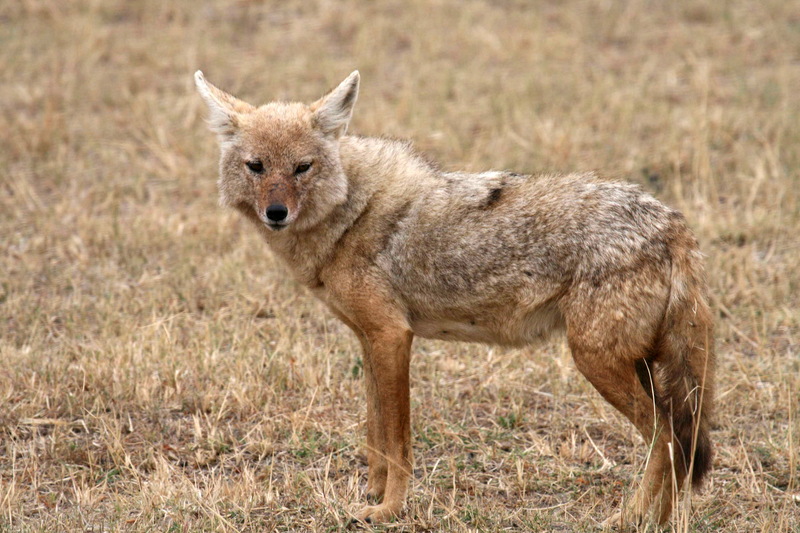Golden jackal
(Canis aureus)

Description
The golden jackal (Canis aureus Linnaeus,1758) is a medium -sized canide widespread in south-eastern and central Europe,Asia Minor,the Middle East and Southeast Asia.It is classified by the IUCN among the species at minimal risk,since it has a vast area where it finds abundant food and shelter.It is a social species that lives in nuclear families that consist of couples accompanied by their puppies.It is a very adaptable animal,being able to exploit numerous sources of food,from fruits and insects to small ungulates.Since 2005,MSW recognizes 13 subspecies,but genetic studies conducted in 2015 showed that six of the supposed subspecies in Africa were part of a species in itself,Canis anthus,thus reducing the number of subspecies of golden jackal to seven.Although similar to a small gray wolf,the golden jackal is slimmer,with a tighter snout,a shorter tail and a lighter pitch.Its winter coat differs from that of the wolf from its reddish-reddish nuances.Despite its informal name,it is not closely related to the jackal by the gualdrappa and the striped jackal,being instead more related to the gray wolf,the coyote and the Ethiopian wolf.Can produce fertile hybrids both with gray wolves and with African ones.The jackal plays an important role in folklore and in Middle Eastern and Asian literature,where he is often portrayed as a deceiver,an analogue of the fox and coyote in European and North American fairy tales.The golden jackal is very similar to the gray wolf in its general appearance,but differs in its reduced size,lower weight,shorter limbs,more elongated thorax and shorter tail.The tip of the tail descends to the heel or slightly below.The head is less stocky than that of the wolf,with a less elevated forehead and a narrower and more pointed snout.The projections of the skull are highly developed,but less than is seen in the wolf.His canine teeth are large and stocky,but relatively thinner than those of the wolf,and his carnassials are less robust.Males measure 71-85 cm in length,while females are slightly smaller.It measures 44.5-50 cm in height and weighs about 6-14 kg.Sometimes the jackal develops a horny excrescence on the skull to which the inhabitants of Southeast Asia attribute magical powers.Usually this horn is about one centimeter long and is hidden by the hair.The iris can be both light brown and dark.The females are supplied with 10 breasts.The winter coat is generally of a reddish-gray-reddish color with the ends of blackish or rust-red guard hairs.The facial region,except the snout,is reddish-rust and ocher;above each eye there is a black stripe.The lips,cheeks,chin and throat are dirty white.The outer face of the legs is red-ocher,while the inner part is light in color.The summer coat is more sparse,coarse and short,but it is the same color as the winter coat: it is only brighter and less dark.The golden jackal mutes twice a year,in spring and autumn.Melan specimens are not unknown,and were in the past considered "not at all rare" in Bengal.Unlike the wolves and melanic coyotes,which historically inherited their black coat through crossbreeding with dogs,it is likely that melanism in the golden jackal is due to an independent mutation,and that it is an adaptive trait.In 2012,an albino specimen was photographed in southeastern Iran.
Taxonomic tree:







